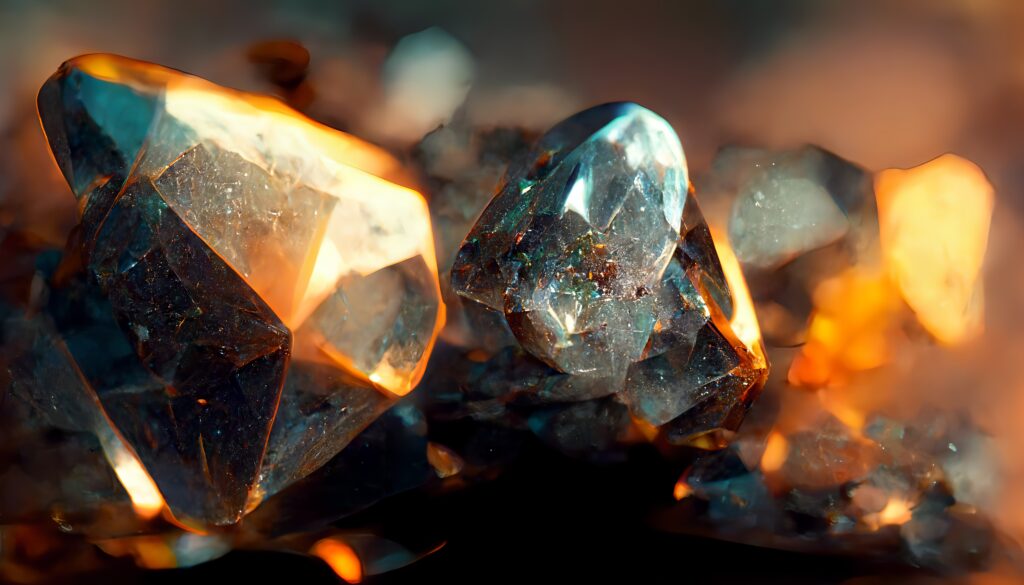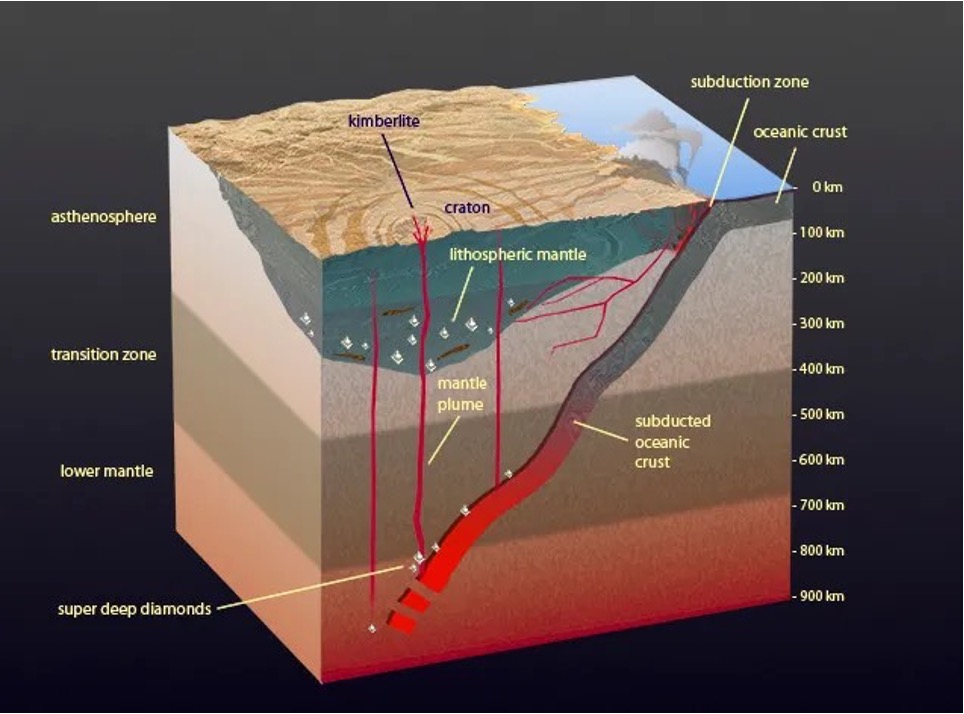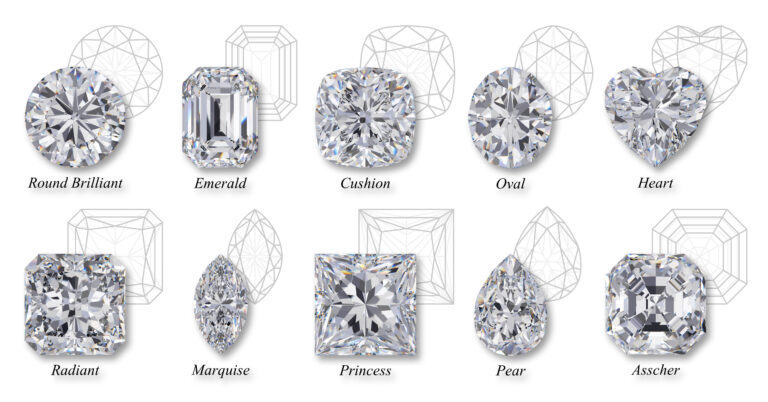
Have you ever wondered how Mother Earth forms the most precious and sought-after gemstone, the Diamond? Diamonds undergo a complex formation process that requires hundreds of years to complete. The formation occurs deep within the Earth’s mantle where the right conditions of pressure, temperature and chemical composition must be met. Through this article, we hope you learn more about diamonds, and how nature forms them and brings them to us.
There are two main processes in which diamonds are formed. The first is the mantle process.
Diamonds are created deep within the Earth, forming at depths of around 140-190 kilometres below the surface. There, carbon-rich materials such as carbon dioxide or organic matter are exposed to high pressure and temperature. Overlying rocks and sediment are responsible for applying pressure to the materials, while the Earth’s internal heat generates the temperature. Being exposed to these extreme conditions, carbon atoms within the materials form a crystalline structure, resulting in diamond crystals. The formed diamonds are transported to the surface through volcanic eruptions. Afterwards, they are transported by magma and become embedded in formed igneous rocks as the magma cools and hardens. These rocks are called kimberlites or lamproites and contain diamonds in their rough form. Diamonds can also be brought to the surface through weathering of existing kimberlite pipes or alluvial (loose clay, silt, sand, or gravel) deposits or erosion. As time goes by, these natural processes gradually uncover the rocks that hold diamonds, making them accessible and suitable for mining.
The second is the subduction process.
The oceanic crust is recycled back into the Earth’s mantle through subduction. In this process, one tectonic plate is forced under another and carbon-rich material from the subducting plate is absorbed into the mantle. This way, diamond crystals can form under high pressure and temperature. Typically, these types of diamonds are found in the form of microscopic crystals within rocks that are brought to the Earth’s surface through volcanic eruptions.
The formation of diamonds can occur through either of these methods. The mantle process is significantly more common and accounts for the vast majority of diamonds produced.

Picture by Peter Johnston © GIA
The presence of diamonds is intricately connected to the geological processes and chemical composition of the Earth’s mantle in a specific region. Typically found in limited quantities, diamonds are a rare and valuable mineral. These precious gems are commonly discovered in isolated and remote regions, making them even more difficult to access.
There are a couple of geological settings, that diamonds are detected in. The first setting is the kimberlite pipes in which most diamonds are formed. They are found in ancient cratons or stable continental regions and are associated with deep-rooted mantle sources. Another source is alluvial deposits in which some diamonds erode from their rocks of origin and are transported downstream by rivers and streams. These deposits can be located in riverbeds, beaches, and other sedimentary environments. Lamproites, similar to kimberlite, are a significant diamond source. However, they are found in younger and less stable geological areas. The last source of diamonds is marine deposits. These deposits in Africa’s coastal areas erode from onshore deposits and are transported offshore by rivers and ocean currents.
If this information intrigues you to purchase this valuable gemstone, our collection offers a variety of diamond jewellery to choose from. Additionally, with our bespoke service, you can create personalised diamond pieces, that are unique to you.




